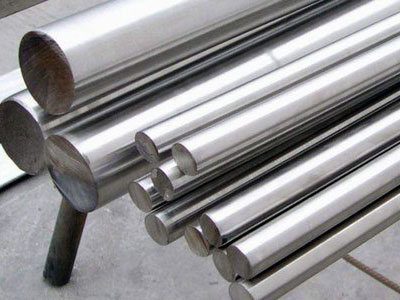Introduction: Understanding A2 Tool Steel in Forging
Forging high-performance materials like A2 tool steel is a critical process in modern manufacturing. Known for its excellent hardness, wear resistance, and machinability, A2 tool steel is widely used in tools, molds, and industrial components. To maximize the material’s properties, working with trusted tool steel suppliers and following precise forging steps is essential.
This guide offers a detailed breakdown of forging A2 tool steel to ensure durable, reliable results.
1. Why Choose A2 Tool Steel for Forging?
A2 tool steel is a medium-alloy steel that offers an ideal balance of toughness and hardness. Its properties make it a popular choice among manufacturers and tool steel suppliers alike.
- Key Properties: The steel’s high chromium content gives it excellent wear resistance and the ability to maintain dimensional stability under stress.
- Applications: It is used for punches, dies, knives, and other precision tools that demand high performance.
- Benefits in Forging: Its annealed condition before forging allows for easier machining and shaping compared to harder tool steels.
Understanding why A2 tool steel is the material of choice can help ensure its optimal use in various forging applications.
2. Step 1: Preparing A2 Tool Steel for Forging
Before the forging process begins, preparing the A2 tool steel is crucial to achieving the desired mechanical properties.
- Material Sourcing: Purchase high-quality A2 tool steel from reputable tool steel suppliers to guarantee uniform composition and quality.
- Inspection: Check for surface defects, such as cracks or inclusions, that could compromise the forging process.
- Pre-Heating: Heat the steel to a temperature between 815°C and 900°C (1,500°F to 1,650°F). This step ensures a uniform heat distribution, making the material easier to work with.
Preparation directly impacts the forging process, making it essential to follow these steps meticulously.
3. Step 2: Forging Process for A2 Tool Steel
The forging process involves shaping the A2 tool steel at high temperatures to improve its strength and toughness.
- Heating: Gradually increase the temperature of the steel to approximately 1,000°C to 1,150°C (1,830°F to 2,100°F). Avoid overheating, as it can degrade the material’s properties.
- Shaping: Using hammers or presses, shape the heated steel into the desired form. Maintain consistent pressure to avoid introducing stress points.
- Temperature Control: Throughout forging, ensure the steel remains above its critical temperature range to prevent cracking.
Forging A2 tool steel requires precision, as improper temperature control or handling can compromise the final product’s integrity.
4. Step 3: Cooling and Annealing A2 Tool Steel
Proper cooling and annealing are vital to achieving the desired hardness and machinability in A2 tool steel.
- Controlled Cooling: Allow the forged steel to cool slowly at room temperature or in a furnace to prevent warping.
- Annealing Process: Reheat the steel to approximately 815°C (1,500°F) and then allow it to cool slowly in the furnace. This process refines the grain structure, improves machinability, and reduces internal stresses.
- Inspection: Post-annealing, inspect the steel for surface defects or inconsistencies that might have developed during forging.
Annealing enhances the steel’s workability and prepares it for further processing, such as machining or heat treatment.
5. Step 4: Heat Treatment for Durability and Hardness
Heat treatment is the final step to enhance the performance of forged A2 tool steel. It involves hardening and tempering to achieve the optimal balance of strength and toughness.
- Hardening: Heat the steel to approximately 960°C to 980°C (1,760°F to 1,800°F), then quench it in air. Air-hardening is a key feature of A2 tool steel, ensuring minimal distortion.
- Tempering: Reheat the steel to a temperature range of 150°C to 500°C (300°F to 930°F), depending on the desired hardness. Tempering reduces brittleness and improves toughness.
- Testing: Use hardness tests (e.g., Rockwell) to verify that the steel has reached the required specifications.
Heat treatment is crucial for ensuring that the forged A2 tool steel meets the durability standards required for demanding applications.
6. Tips for Working with Tool Steel Suppliers
Selecting the right tool steel suppliers is essential for ensuring the quality and consistency of A2 tool steel used in forging.
- Reputation: Work with suppliers known for delivering certified, high-quality tool steels that meet industry standards.
- Material Options: Ensure the supplier offers a wide range of tool steel grades, including pre-annealed A2 tool steel.
- Technical Support: Partner with suppliers that provide expert advice and detailed material specifications to optimize your forging process.
- Sustainability: Consider suppliers that prioritize eco-friendly practices, such as recycling scrap material and reducing carbon emissions.
Building a strong relationship with reliable tool steel suppliers can significantly enhance the efficiency and quality of your forging operations.
7. Common Challenges in Forging A2 Tool Steel
Forging A2 tool steel comes with its own set of challenges, but understanding and addressing these can lead to better outcomes.
- Overheating Risks: Exceeding the recommended forging temperature can result in grain growth and reduced toughness.
- Cracking During Cooling: Rapid cooling or uneven heat distribution can cause stress fractures.
- Surface Defects: Impurities or poor-quality steel from unreliable suppliers may lead to defects during forging.
By working closely with experienced tool steel suppliers and following best practices, these challenges can be mitigated.
Conclusion: Forging Excellence with A2 Tool Steel
Forging A2 tool steel requires precision, expertise, and high-quality materials from trusted tool steel suppliers. From preparation and heating to shaping, annealing, and heat treatment, each step plays a crucial role in creating durable components. By adhering to the outlined process and maintaining strong partnerships with suppliers, manufacturers can unlock the full potential of A2 tool steel for a wide range of industrial applications.
With its exceptional properties and widespread availability, A2 tool steel remains a cornerstone of modern manufacturing, ensuring reliable and long-lasting performance across industries.

